While some people prefer a basic black coffee, there are many delicious coffee variations to enjoy. Two popular variations are lattes and espressos. What’s the difference between latte vs espresso? Despite both being made with coffee beans, they are quite different.
Lattes are larger drinks (often 8-15oz), made with espresso and steamed milk. Espressos are just a few ounces (1-2.5) of concentrated coffee. Espressos are a basic component of most coffee drinks, including lattes and Americanos.
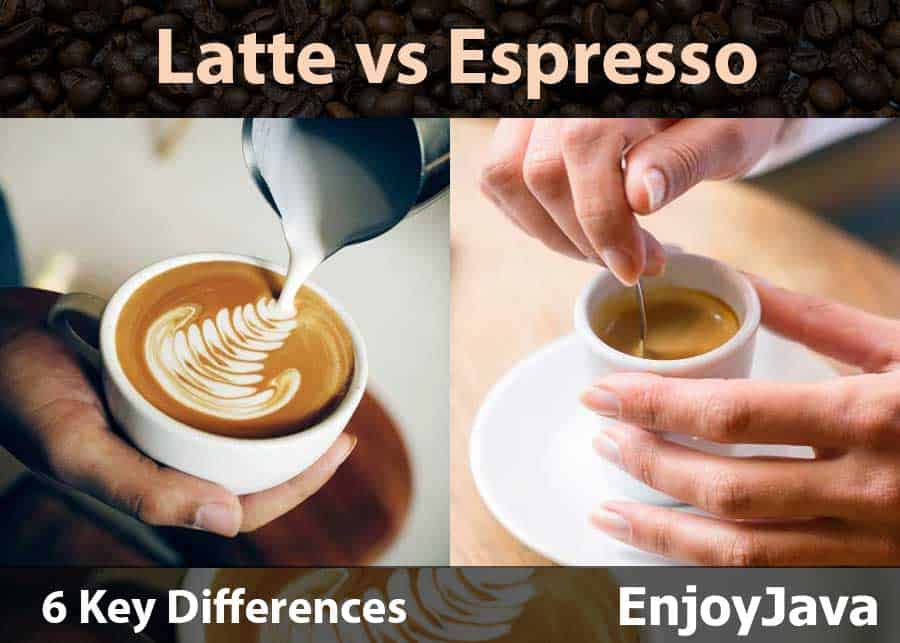
We’ll define what these drinks are and identify the differences between lattes and espressos. By the end of this article, you’ll be able to pick out which one of these delicious coffee drinks you want to order the next time you’re at a coffee shop.
Table of Contents
What is an Espresso?
Espresso is coffee in its simplest form. It’s essentially highly concentrated coffee that you serve in one-ounce portions.
How Espresso is Made: You finely grind coffee beans when making espresso and then combine them with hot water under high pressure. This process extracts the flavor of the coffee bean to create a robust and bold drink.
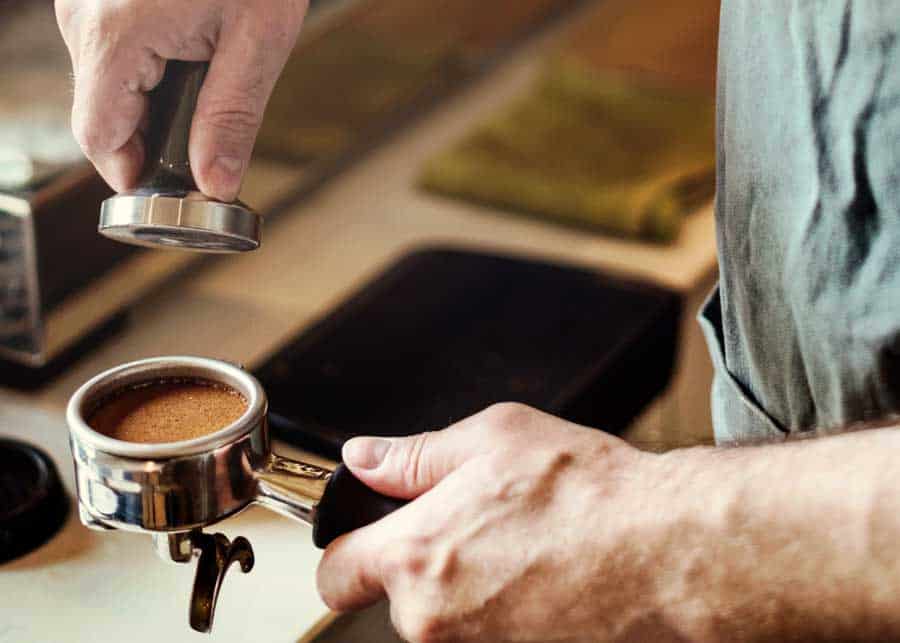
An espresso shot has three distinct sections. The bottom of the shot is the body and the drink’s darkest portion. The middle is a lighter brown, and the top is a creamy brown foam called the crema.
You typically serve this coffee drink black, although some prefer to add creme and sugar. You often use espresso as a base for drinks like cappuccinos and iced coffee.
Espresso is the building block of lattes, Americanos, macchiatos, and mochas.
What is a Latte?
A latte is one of the many coffee drinks made with cream or milk. But, is a latte an espresso drink? Yes, a latte is a combination of espresso and steamed milk.
Lattes are much creamier than espresso and have a layer of microfoam on top. Microfoam is milk that you steam until it forms bubbles that are too small to be seen by the naked eye.
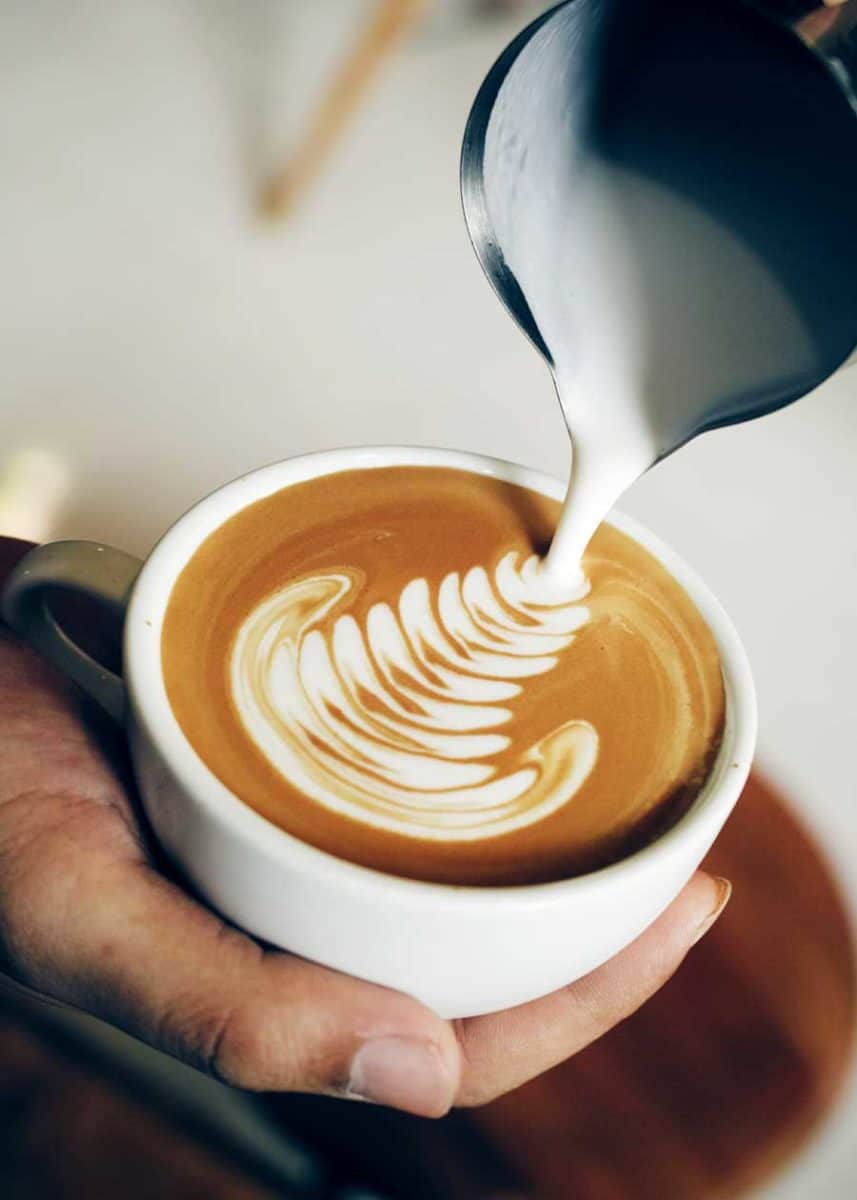
This coffee drink originated in Italy and is often served in six to eight-ounce portions. The espresso-to-milk ratio in a latte is 1:3 or 1:4.
You can serve lattes with different milk types, including:
- Cows Milk
- Soy
- Almond
- Oat
Other variations include flavored syrups like vanilla, caramel, and cinnamon.
Here’s how to order coffee in Italian.
6 Key Differences: Latte vs Espresso
Now that we’ve defined what a latte and an espresso are, let’s take a closer look at the critical differences between the two drinks.
1. How They Are Made
The first difference is in the way you make them.
- Espresso is made by grinding coffee beans to a very fine texture and then combining them with hot water under high pressure.
- A Latte is made by adding shots of espresso to steamed milk.
2. Milk Content
Another significant difference is the presence or absence of milk. You almost always serve espresso without cream or milk.
- If you add milk to espresso, it’s no longer considered an espresso.
- Lattes, on the other hand, are predominantly milk. A latte is traditionally around 75% steamed milk and milk foam. The additional 25% is espresso. Because of the high milk content, lattes have a much more subdued coffee flavor than espresso.
3. Caffeine Content
Another difference between these two drinks is the caffeine content. Lattes generally have more caffeine than a standard espresso because they contain numerous espresso shots.
While the amount of caffeine in coffee can vary depending on the roast, typically, an espresso shot has around 63mg of caffeine.
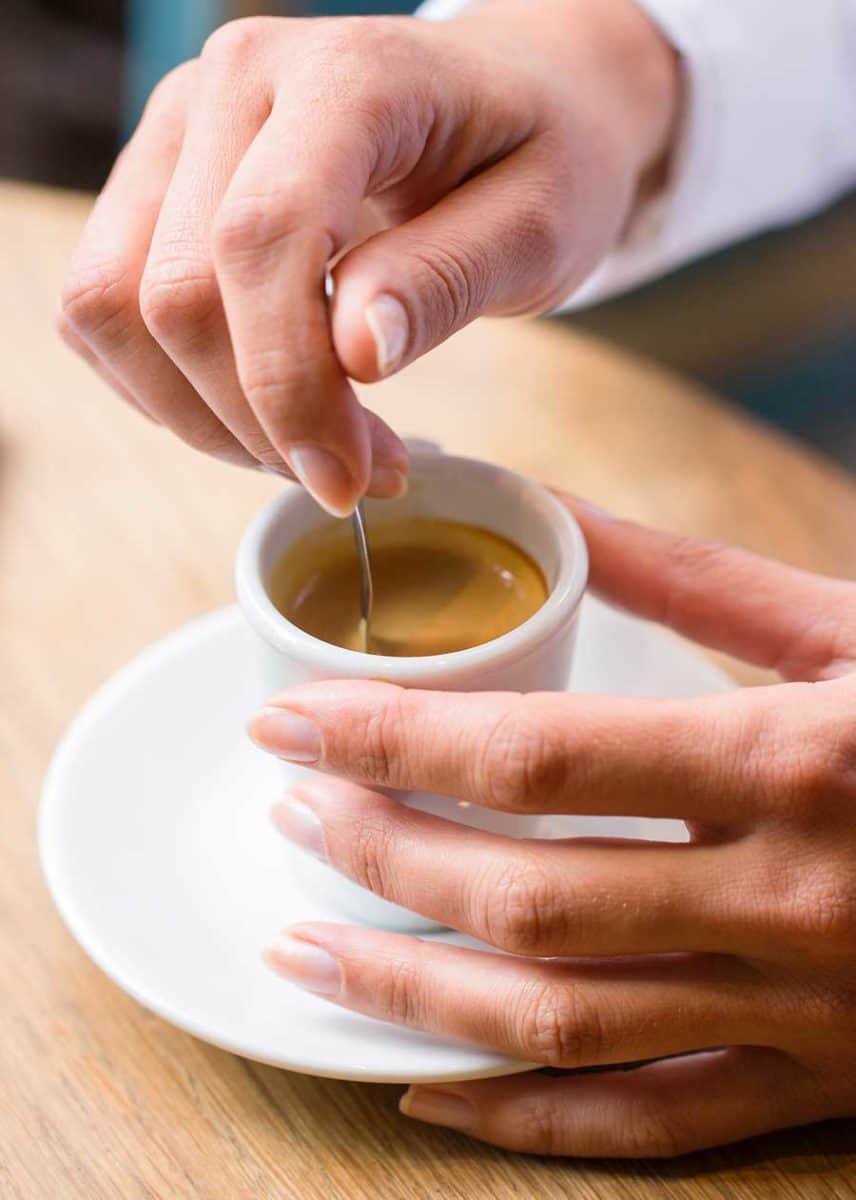
4. Foam vs. Crema
Although both drinks have a foamy top, they’re pretty different.
The top of espresso is called crema. You create the cream by passing hot water through the coffee grounds.
Passing hot water through the coffee grounds releases the oils in the coffee beans infused with CO2. The CO2 causes the coffee oils to bubble up, which creates the crema on top of the espresso.
The layer of crema is around 1/5 of an inch thick. If it’s thicker than this, you know that the espresso was made using Robusta beans exclusively.
A latte’s foam comes from milk foam. To create milk foam, you pass steam through milk. The steam causes the fat molecules in the milk to rise to the surface and form bubbles.
The milk foam allows baristas to draw shapes in your latte. You can tell if the foam on a latte is good quality if it’s creamy and thick.
5. The Volume of the Drink
Another significant difference in the latte vs. espresso debate is each drink’s volume.
- Espressos are no more than three ounces
- Lattes tend to be at least 8 ounces
6. Flavor
The final difference in the latte vs. espresso comparison is the flavor of the two drinks.
- Espresso has a bold and intense flavor because of the way it’s made.
- Lattes have a more mellow and subtle coffee flavor because of the milk content. Lattes also have a richer flavor than espresso due to the steamed milk.
Do Lattes Contain an Espresso?
Do lattes have espresso? Yes. In the case of latte vs. espresso, espresso came first. Espressos are one of the original coffee drinks. The latte was invented by adding milk and creme to an espresso.
As a result, all lattes contain espresso, and a typical latte has one or two shots of espresso.
Learn more about other types of coffee.
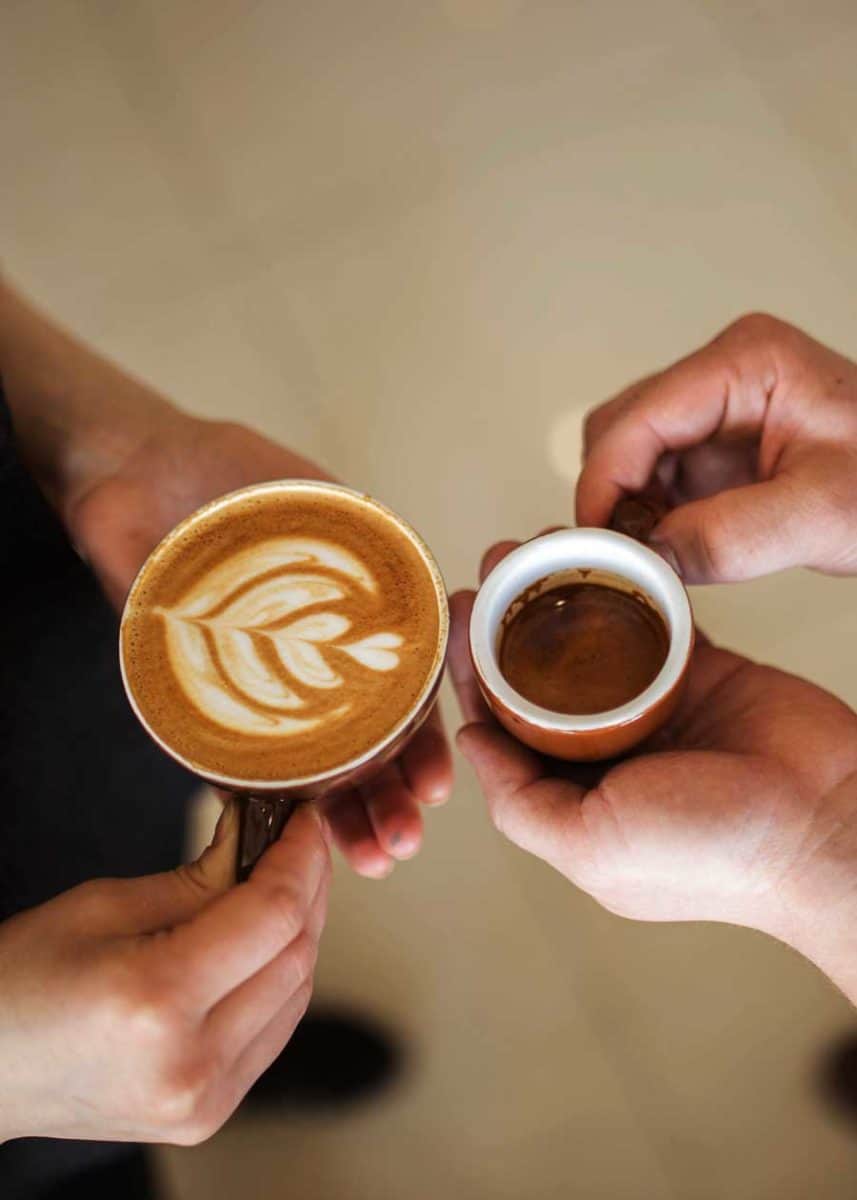
Wrap Up
Lattes and espressos are both delicious coffee drinks. They are made using different methods and have different flavor profiles.
The critical difference between lattes vs. espressos is that all lattes contain espresso, while espresso doesn’t contain milk unless you request it be added.
Lattes are also significantly larger than espresso and have a more subtle flavor.
Now that you know the difference between these two drinks, you will know what to order the next time you’re at a coffee shop.
Have a detail or tip to share? Please join me in the comments!
- About the Author
- Latest Posts
Dena Haines is a co-founder and blogger on EnjoyJava – and is working to make it the best coffee blog in the world.
She also blogs about travel at Storyteller.Travel and photography at Storyteller Tech. Dena is a partner at Storyteller Media, a publishing company she started with her husband, Bryan.
